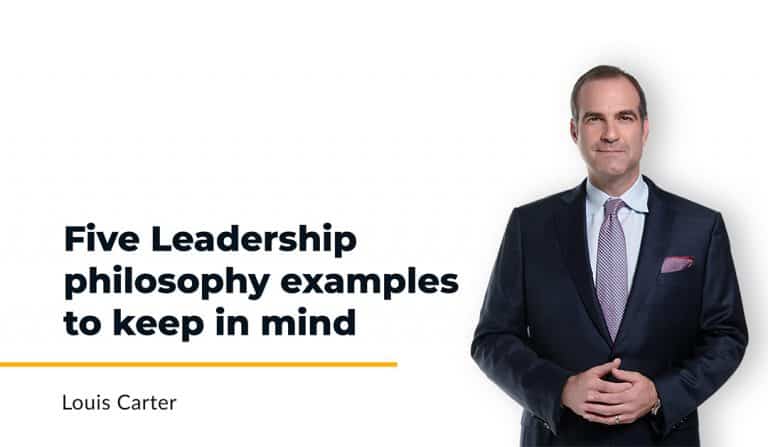Have you ever felt like you were the only one speaking at a meeting, and everyone else shuts their mouth to avoid incriminating themselves? This happens and can cause disastrous effects like stagnation, accidents, lost opportunities, lawsuits, and loss of life.
Creating an environment that fosters open communication, constructive feedback, and collaborative decision-making is crucial for leadership success. Yet, many leaders often need help dealing with passive-aggressive behavior and a lack of active participation from their team members. However, by embracing a Level Up approach, leaders can encourage their team to step up, share feedback, and provide valuable advice. This article outlines four essential steps to Level Up, supported by academic research and real-life cases, to help leaders create a culture of open communication and collaboration.
Have you ever felt like you were the only one speaking at a meeting, and everyone else shuts their mouth to avoid incriminating themselves? This happens and can cause disastrous effects like stagnation, accidents, lost opportunities, lawsuits, and loss of life.
Creating an environment that fosters open communication, constructive feedback, and collaborative decision-making is crucial for leadership success. Yet, many leaders often need help dealing with passive-aggressive behavior and a lack of active participation from their team members. However, by embracing a Level Up approach, leaders can encourage their team to step up, share feedback, and provide valuable advice. This article outlines four essential steps to Level Up, supported by academic research and real-life cases, to help leaders create a culture of open communication and collaboration.

- Volkswagen’s Emissions Scandal: In 2015, Volkswagen cheated on emissions tests by manipulating software in their diesel vehicles. This scandal resulted in significant financial losses, a damaged reputation, and legal repercussions for the company. Some employees were aware of the fraudulent activities but failed to speak up due to fear of retaliation or job loss.
- Boeing’s 737 Max Crisis: Boeing’s 737 Max aircraft faced multiple crashes, leading to the grounding of the entire fleet in 2019. Investigations revealed that design flaws and inadequate training were contributing factors. Several employees had concerns about the aircraft’s safety but chose not to speak up, fearing negative consequences. The failure to address these concerns ultimately resulted in tragic accidents and significant damage to Boeing’s reputation.
Step 1: Cultivating Psychological Safety
Research has consistently shown that psychological safety is pivotal in enabling team members to speak freely and share their thoughts.
According to Amy Edmondson, a professor at Harvard Business School, psychological safety is the belief that one will not be punished or humiliated for speaking up with ideas, questions, concerns, or mistakes. Leaders must create an environment that nurtures psychological safety by:
a) Leading by example: By openly sharing their challenges, mistakes, and learning experiences, leaders encourage their team members to do the same.
b) Establishing trust: Building solid relationships based on trust and respect is essential for fostering an environment where individuals feel comfortable voicing their opinions.
c) Encouraging diverse perspectives: Embracing diversity and inclusivity within the team enhances the richness of ideas and encourages everyone to contribute their unique insights.
Step 2: Active Listening and Empathy
Active listening is vital for leaders seeking to Level Up their teams. It involves fully engaging with what others are saying and demonstrating empathy toward their perspectives. Active listening techniques include:
a) Providing undivided attention: Leaders should set aside distractions, maintain eye contact, and actively listen to team members without interrupting.
b) Reflective responses: Paraphrasing and summarizing allow leaders to ensure their understanding and show respect for the speaker’s viewpoint.
c) Empathy and validation: Acknowledging the emotions and concerns of team members helps build rapport and trust, making individuals more likely to share their thoughts openly.
Step 3: Creating Feedback Channels
Establishing effective feedback channels is essential to ensure team members feel their opinions are valued and acted upon, and achieved through the following steps:
a) Regular feedback sessions: Schedule dedicated times for feedback discussions where team members can openly express their thoughts, concerns, and ideas.
b) Anonymous feedback mechanisms: Some individuals may feel more comfortable sharing their feedback anonymously, ensuring a safe space for honest opinions.
c) 360-degree feedback: Encourage feedback from multiple sources, including peers, subordinates, and superiors, to provide a comprehensive understanding of team dynamics and leadership effectiveness.
Step 4: Acting on Feedback and Collaboration
Leaders must solicit feedback and take meaningful action based on input, foster a collaborative culture, and show that feedback is genuinely valued. To achieve this, leaders should:
a) Communicate changes and improvements: Transparently communicate the actions taken based on the feedback received by the team to demonstrate that their input is respected and acted upon.
b) Foster a collaborative environment: Encourage team members to collaborate on decision-making processes and problem-solving, making everyone feel invested in the outcome.
c) Provide growth opportunities: Create avenues for personal and professional development based on the feedback received, enabling team members to contribute further and grow.
Real-life Cases:
Case 1: Google’s Project Aristotle Google’s extensive research on team effectiveness found that psychological safety, where team members felt safe to take risks and be vulnerable, was the most critical factor in high-performing teams.
Case 2: Buffer’s Radical Transparency Buffer, a social media management company, practices radical transparency by publicly sharing almost all internal communications. This approach encourages open feedback and collaborative decision-making.
Conclusion
By embracing the Level Up approach, leaders can create an environment where team members feel empowered to openly share their feedback, ideas, and advice. Cultivating psychological safety, active listening, creating feedback channels, and acting upon the feedback received are fundamental steps in fostering a culture of open communication and collaboration. As leaders implement these strategies, they pave the way for higher team performance, innovation, and individual growth.







